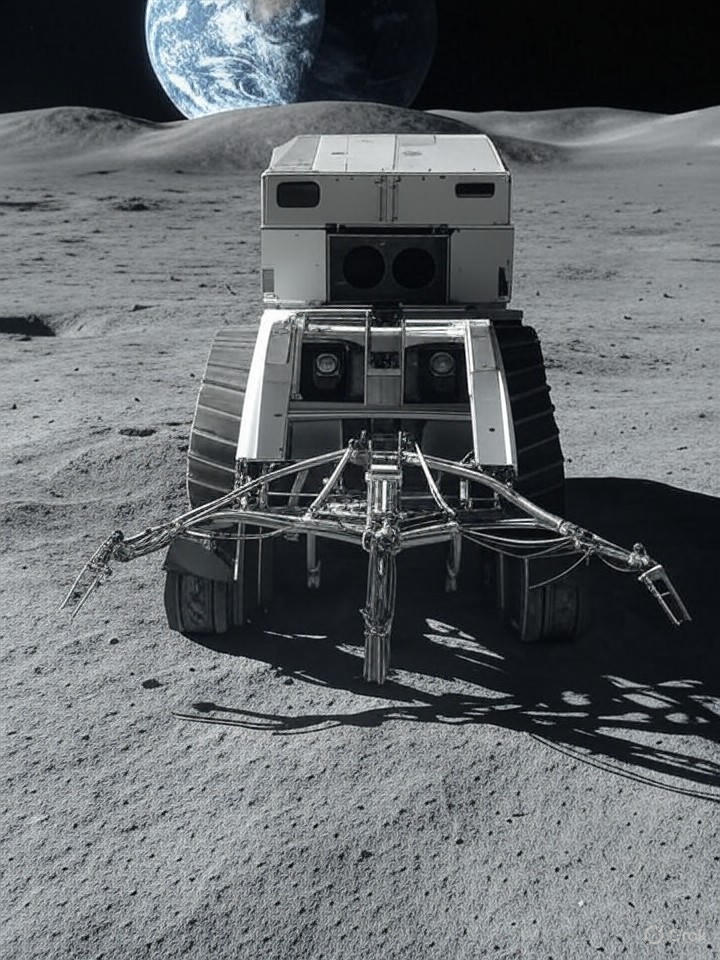A new chapter in space exploration is unfolding as the mining company Interlune has announced the discovery of significant helium-3 deposits on the lunar surface. This rare isotope, which holds the potential to transform industries from clean energy to quantum computing, could be harvested commercially as early as 2028. The implications of this development are profound, particularly as nations and private enterprises increasingly focus on harnessing the moon’s untapped resources.
Interlune’s recent findings, detailed in various reports, highlight the growing commercial interest in lunar mining. The company claims to have utilized advanced surveying techniques to identify these valuable helium-3 reserves, setting the stage for what could be the first commercial extraction of lunar materials. Helium-3 is abundant in the moon’s regolith, a result of billions of years of exposure to solar wind, and is considered ideal for nuclear fusion reactors due to its non-radioactive properties.
Industry experts estimate the value of helium-3 could reach up to $20 million per kilogram, driven largely by its demand in high-tech sectors. This announcement comes at a time when competition between superpowers intensifies, particularly between the United States and China, both seeking to establish dominance in lunar exploration and resource utilization.
Technological Innovations and Market Confidence
Interlune’s efforts are already gaining traction in the market. The company has secured agreements to supply up to 10,000 liters of helium-3, marking a significant step towards commercial viability. They have also unveiled a prototype harvester capable of processing 110 tons of lunar soil per hour. This machinery aims to overcome the logistical challenges of lunar operations, including extreme temperatures and the lack of an atmosphere, while minimizing environmental disruption.
The applications of helium-3 extend beyond energy production. It is also used in medical imaging and supercomputing, where its scarcity on Earth has driven prices higher. According to a report by The Washington Post, Interlune is developing robotic systems for autonomous mining operations, with plans for these technologies to be operational by 2028. This timeline aligns with NASA‘s Artemis program and China’s Chang’e missions, which may provide the necessary infrastructure for transport and processing.
While challenges such as the high costs of space travel and the economics of returning materials to Earth remain, proponents of the project argue that utilizing lunar resources for in-situ construction of habitats or fuel depots could mitigate these expenses. Global powers are increasingly viewing helium-3 as a critical resource, with some referring to it as “moon gold,” a sentiment echoed by sources like Interesting Engineering.
Economic and Ethical Considerations
The financial backing for Interlune’s venture is strengthening, as the company raises funds to deploy multispectral cameras for precise resource mapping. A significant contract with the quantum cryogenics firm Bluefors has been noted as one of the largest space resource agreements to date, underscoring the isotope’s role in advancing computational technologies.
Ethical considerations regarding equitable access to lunar resources are also being discussed. Critics express concerns over a potential new colonial rush for lunar materials, while supporters, including those referenced in European Space Agency publications, argue that shared technological advancements could benefit all humanity, particularly through the development of safer fusion energy that could help combat climate change.
As the prospect of successful helium-3 mining approaches, it could catalyze a broader space economy that includes the extraction of water ice, rare earth elements, and oxygen from lunar soil. Insights from various technology blogs suggest that these developments could support permanent lunar settlements, reducing reliance on Earth-supplied resources.
For industry insiders, the focus is now on scalability. If Interlune’s prototypes prove effective, they could attract billions in investment, marking a significant transition in space exploration from a scientific endeavor to a profitable industry. The extraction of cosmic resources is no longer a distant dream; it is on the verge of becoming reality, promising to reshape both our technological landscape and global energy dynamics.







